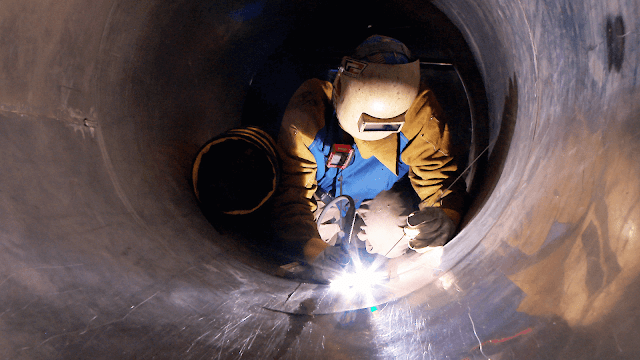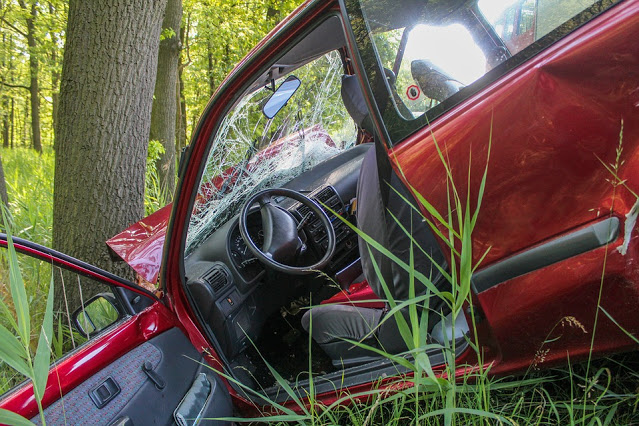Safety Talks: Firefighting Awareness
Basic Firefighting information is essential, many people specially
homemaker females due to their lack of knowledge can’t extinguish even a small
home fire and eventually become victim of fire situation. Knowledge about fire
extinguishers is significant regardless of your profession and age so that you
can save your life and lives of others in event of fire emergency. In this blog
we are going to discuss some quick tips on fire extinguisher use, it is going to
include the types of fire extinguishers, method of use, when to use and where
to use.

Firefighters fighting with a large scale fire
Remember, right of selection fire extinguisher on right kind of
fire is essential because wrong selection can be harmful and lead into the
trouble rather than controlling fire so without further delay let's jump right
into it, to know about how to fight fires you first have to understand that
fire is combination of three elements knows as fuel, oxygen and heat when
combined called as fire triangle.
The fire extinguishers are designed in accordance to the international
standards e.g. British, European and American standards however here we will focus
on US standard NFPA 10: Standard for portable fire extinguishers. Fire
Extinguishers mostly used as water, foam, carbon di oxide, ABC dry powder and
wet chemical extinguishers whereas on some places such as pantries, welding and
wood workshops, chemical storage and processing zones fire blanket also
advisable. As explained above using the wrong type of extinguisher can actually
just make a fire dangerous, let’s assume an example of the burning oil and just
imagine fire being extinguished with a water extinguisher now the oil is
naturally going to float on top of the water and the water will just encourage
the fire to spread so you have to know the type or classification of the fire
that need to be extinguished, fire can
start due to many possible causes such as poor housekeeping, electrical short
circuit, smoking, arson,
accidental, from cooking, heating of appliances and even from young fire setters. The three
ways of killing a fire are cooling, smothering and starvation that breaks the
chain reaction and stop a fire from burning, these three methods when one of
them is used they cut off a burning source from the fire triangle such as fuel
oxygen or heat any one of them is actually cut off from the triangle so that
fire can be extinguished.
 |
Author delivering a Fire Training
Session at UAE Civil Defense Academy |
Now let’s talk about the fire classification in accordance to the
NFPA, when we talk about class A fires such as fires generated from ordinary
combustible e.g. paper wood plastic textiles etc class B fire such as flammable
liquids and gases e.g. gasoline, kerosene, methane, propane, butane etc, class
C fire related to the electrical fire, class D fire related to the burning
metals such as magnesium potassium titanium etc class K fire which is known as
the kitchen fire to remember this we must put in our mind K for kitchen. A fire
extinguisher isn't designed to extinguish a fire that large in fact you're
going to run out of chemicals before you get that far along one thing to note when
making the decision whether to leave the building or put out a fire is that
mostly fire extinguishers only have enough extinguishing agent to last about 30
seconds, in the event of a fire always make the decision that your safety is your
priority never put yourself in the position where the fire is blocking you.
To use fire extinguisher remember the acronym PASS:
P= pull the pin
A= aim the nozzle
S= squeeze the trigger
S= sweep at base of the fire (left to right and vice versa)
 |
| Pictures: Clockwise showing inspection tag, pressure gauge and AMC tag of the Fire Extinguisher |
Once fire is out it's not uncommon for the fire
to reignite a few minutes later so make sure that you're keeping watch until
you're certain that it's out and done, so now you know the basics of fire
extinguisher use make sure you go around your work area and check that you have
the right fire extinguishers for the type of fuel available also check the fire
extinguishers to make sure that they're properly charged and ready to go in
case they're ever needed. Thank you so much for reading the blog if you enjoyed
this remember to leave a comment and inform us about your experience of using
fire extinguisher in a fire situation if you had used ever.



Thank you for sharing this. It’s great to see such informative content online.
ReplyDeleteMARIA B lawn